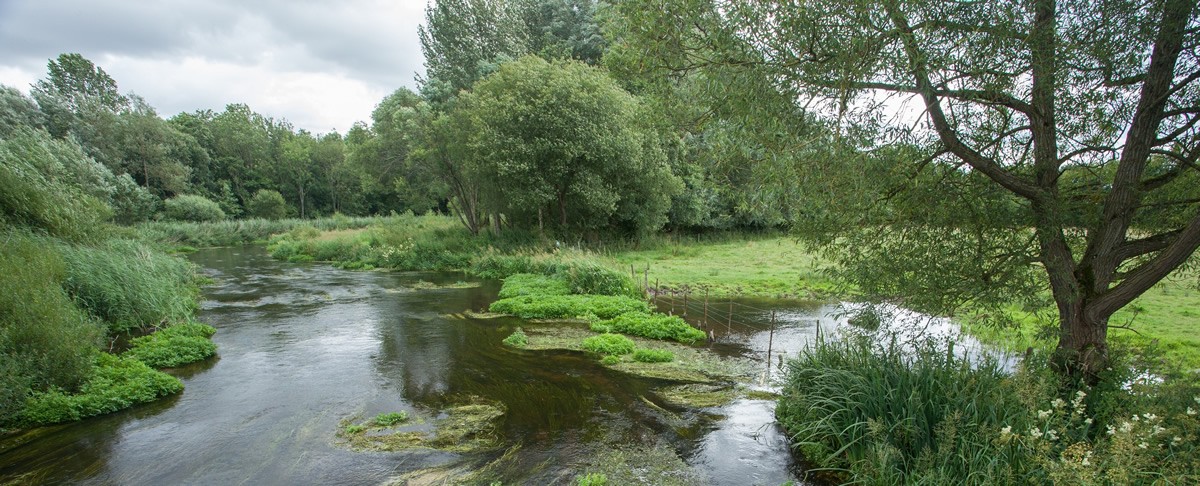This content has been archived. It may no longer be relevant
Press Release
Issued by: Salmon & Trout Conservation
Study shows sewage treatment plants are deadly for world-famous river.
Wild fish charity, Salmon & Trout Conservation (S&TC) and Salisbury & District Angling Club have recently submitted a scientifically-backed formal warning ( Request for Action) to the Environment Agency about the rapid destruction of one of our most highly protected chalkstreams – the Upper Avon in Wiltshire.
Scientific monitoring by Salmon & Trout Conservation has highlighted that this once bursting with life chalkstream has suffered a dramatic decline in water quality with a consequential loss of water insect life – the base of the aquatic food chain. The Riverfly Census covered reaches on the river Avon from Stonehenge and Amesbury to Stratford sub Castle in Salisbury, to provide a 3-year data baseline of life in the river.
A major source of this pollution is caused by phosphates. Effluent discharges from three sewage treatment works in the catchment are recognised as a major source of these damaging phosphates into the river. Phosphates are widely acknowledged as a major cause of water quality deterioration in the River Avon.
Significantly, these discharges have been increasing at an alarming rate since 2015. Population forecasts show that this situation will deteriorate even further because of increased housing developments and the re-basing of many thousands of servicemen and their families.
Jan Szakowski from the Salisbury and District Angling Club said, “We have issued a formal notification to the Environment Agency of the severe environmental damage that has been caused and continues to be caused by phosphate effluent from sewage treatment works operated by Wessex Water. Unless something is done immediately there is an imminent threat that the damage will become even worse.”
Nick Measham from Salmon & Trout Conservation said “For several years fishermen and river keepers have reported deterioration in the Avon with increased siltation, reduced riverfly hatches and a reduction in Ranunculus growth, which is the signature of a healthy chalkstream.
“Matters came to a head when river ‘benchmarking’* by S&TC confirmed with certainty how dramatically insects in the river had declined. It is no exaggeration to say that we have an environmental disaster on our hands and the river is being destroyed.”
Nick Measham explains the results of the monitoring, “Phosphate levels in the affected river have increased by 50% and the levels are more than double the maximum required for a healthy river. At the same time, we have measured a shocking decrease of invertebrate life of more than 90% in the same period. For example, mayfly numbers in West Amesbury have gone from 1,903 in 2015 to just four in 2017.”
Why does this matter? Nick Measham explains, “As well as the destruction of mayflies, birds, fish and other animals all depend on mayfly and invertebrate life for survival. The data shows that this vital food source is being wiped out.”
Although it is recognised that phosphate effluent is not the only harmful factor affecting the health of our rivers, sewage effluent presents a clear and continuing threat. Even Wessex Water acknowledges that the sewer catchment is unable to cope with the planned increase in housing developments.
Jan Szakowski concludes, “The River Avon has precious environmental value and is designated a Special Area of Conservation. Currently the sewage treatment works on the Avon at Upavon, Ratfyn and West Amesbury present an unacceptable threat to wildlife and this unique chalkstream ecosystem. As a Government regulator, the Environment Agency is responsible for protecting our fresh waters and we hope that they will now exercise their regulatory powers. They need to take action to ensure that Wessex Water carries out a major upgrade of its sewage treatment works and for its phosphate stripping capability to be radically improved.”
But this is just the tip of the iceberg. Nick Measham adds, “It is not just the Avon that is suffering from high levels of phosphate and sediment pollution. Our three-year national Riverfly Census has identified that many other rivers are suffering from effluent discharged from antiquated sewage treatment works too. Our data shows that this is having a disastrous impact on our water insects and in turn our aquatic wildlife. We have provided incontrovertible evidence and it is now up to Government authorities to make polluters pay and crucially, to act before it is too late.”
Salmon & Trout Conservation and the Salisbury and District Angling Club have arranged a summit meeting with the Environment Agency shortly after Easter to discuss these concerns.
For further information on this press release or images, please contact: Morag Walker – mobile: 07736 124097 or email: morag@salmon-trout.org

